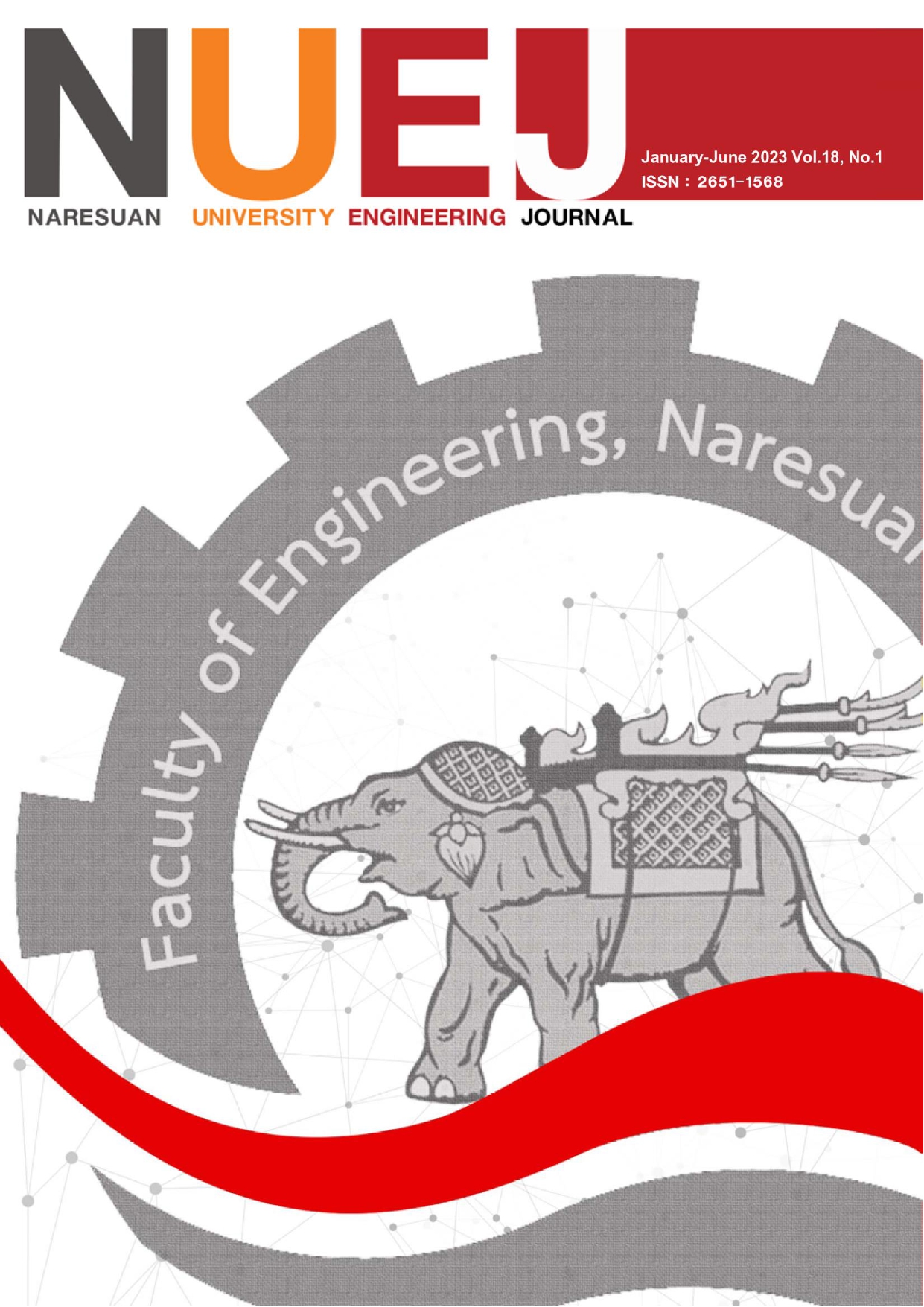Assessment of Performance and Durability in Cement-Stabilized Quarry By-Product Soil as Road Pavement Bases
Main Article Content
Abstract
The knowledge of polymer-modified concrete has been well established and employed in real field applications for over a decade. On the other hand, research on polymer-stabilized soil is still limited. Therefore, this study aims to evaluate the performance and durability of polymer-stabilized soil for pavement applications. This study used the same polymer types for concrete modification as soil stabilizers. Two types of polymers used in this research are the Styrene Acrylic (SA) polymer and Styrene-Butadiene Rubber (SBR). The engineering performance, water absorption, and durability tests were conducted to characterize the polymer-stabilized soils. Preliminary results reveal that the strength and durability of polymer-stabilized quarry by-product soil can be improved by the proper dosage of polymers and cement. However, stabilized soil with the polymer alone cannot resist moisture damage at an early age; these are indicated by the dramatic drops in CBR values of the soaked specimens. Therefore, the stabilized soil requires little cement to gain its early strength. The test results indicate the possibility of employing polymer-stabilized cemented soil as road pavement materials. Besides the strength improvement by 21% to 29%, the polymer additives also enhanced the durability and reduced the water absorption rate of the cemented soil.
Article Details

This work is licensed under a Creative Commons Attribution-NonCommercial-NoDerivatives 4.0 International License.
References
Aggarwal, L. K., Thapliyal, P. C., Karade, S. R., 2007. Properties of polymer-modified mortars using epoxy and acrylic emulsions. Construction and Building Materials,21(2),379-383. https://doi.org/10.1016/j.conbuildmat.2005.08.007
Al-Khanbashi, A., Abdalla, S. W., 2006. Evaluation of three waterborne polymers as stabilizers for sandy soil. Geotechnical & Geological Engineering, 24(6), 1603-1625.
ASTM., 2000. Standard test methods for compressive strength of molded soil-cement cylinders. ASTM D1663. West Conshohocken, PA.: ASTM International.
ASTM., 2007. Standard test method for particle-size analysis of soils. ASTM C136. West Conshohocken, PA.: ASTM International.
ASTM., 2012. Standard test methods for laboratory compaction characteristics of soil using modified effort (56,000 ft-lbf/ft3 (2,700 kN-m/m3)). ASTM D1557. West Conshohocken, PA.: ASTM International.
ASTM., 2015. Standard test methods for wetting and drying compacted soil-cement mixtures. ASTM D559. West Conshohocken, PA.: ASTM International.
ASTM., 2016. Standard Test Method for California Bearing Ratio (CBR) of Laboratory-Compacted Soils. ASTM D1883. West Conshohocken, PA.: ASTM International.
Ateş, A., 2013. The Effect of Polymer-Cement Stabilization on the Unconfined Compressive Strength of Liquefiable Soils. International Journal of Polymer Science, 2013, 356214.
Azzam, W. R., 2014. Utilization of polymer stabilization for improvement of clay microstructures. Applied Clay Science 93-94, 94-101. doi:https://doi.org/10.1016/j.clay.2014.03.006
Baghini, M. S., AIsmail, A., Naseralavi, S. S., et al., 2016. Performance evaluation of road base stabilized with styrene–butadiene copolymer latex and Portland cement. International Journal of Pavement Research and Technology, 9(4), 321 – 336.
Cameron, D., Hopkins, C., Rahman, M., 2016. Hydrophobic Polymer Additive for Stabilization of Aggregates in Local Government Roads. Procedia Engineering,143,26-33. doi:https://doi.org/10.1016/j.proeng.2016.06.004
Erlingsson, S., Rahman, S., Salour, F., 2017. Characteristic of unbound granular materials and subgrades based on multi stage RLT testing. Transportation Geotechnics, 13, 28-42. doi:https://doi.org/10.1016/j.trgeo.2017.08.009
Jitsangiam, P., Nikraz, H., 2012. Coarse bauxite residue for roadway construction materials. International Journal of Pavement Engineering, 14(3), 265-273.
Jitsangiam, P., Nusit, K., Chummuneerat, S., et al., 2016. Fatigue Assessment of Cement-Treated Base for Roads: An Examination of Beam-Fatigue Tests. Journal of Materials in Civil Engineering 28(10), 04016095.
Kodikara, J., Lee, K. Y., Chakrabarti, S. 2003. Laboratory assessment of capillary rise in stabilized pavement materials. Paper presented at the Proceedings of the 21st ARRB and 11th REAAA conference, Cairns, Australia.
Kohgo, Y., Nakaho, M., Miyaki, T., 1993. Theoretical aspects of constitutive modeling for unsaturated soils. Soils and Foundations, 33(4), 49-63.
Leroueil, S., Hight, D. W., 2013. Compacted soils: From physics to hydraulic and mechanical behaviour. In B. Caicedo, C. Murillo, H. Laureano, J. E. Colmenares, & I. R. Berdugo (Eds.), Advances in unsaturated soils (pp. 41-59). Broken Sound Parkway, N.W.: CRC Press.
Liu, J., Wang, Y., Lu, Y., et al., 2017. Effect of Polyvinyl Acetate Stabilization on the Swelling-Shrinkage Properties of Expansive Soil. International Journal of Polymer Science, 2017, 8128020.
Naeini, S. A., Naderinia, B., Izadi, E., 2012. Unconfined compressive strength of clayey soils stabilized with waterborne polymer. KSCE Journal of Civil Engineering, 16(6), 943-949.
Nusit, K., Jitsangiam, P., Kodikara, J., et al., 2016. Advanced Characteristics of Cement-Treated Materials with respect to Strength Performance and Damage Evolution. Journal of Materials in Civil Engineering 29(4), 04016255.
Ohama, Y., 1998. Polymer-based admixtures. Cement and Concrete Composites 20(2), 189-212. doi:https://doi.org/10.1016/S0958-9465(97)00065-6
Orts, W. J., Roa-Espinosa, A., Sojka, R. E., et al., 2007. Use of Synthetic Polymers and Biopolymers for Soil Stabilization in Agricultural, Construction, and Military Applications. Journal of Materials in Civil Engineering19(1),58-66. doi:doi:10.1061/(ASCE)0899-1561(2007)19:1(58)
Raucah, A. F., Katz, L. E., Liljestrand, H. M., 1993. An Analysis of the mechanisms and efficacy of three liquid chemical soil stabilizers: volume 1: Texas Department of Transportation.
Rezaeimalek, S., Nasouri, A., Huang, J., et al., (2017a. Comparison of short-term and long-term performances for polymer-stabilized sand and clay. Journal of Traffic and Transportation Engineering (English Edition), 4(2), 145-155. doi:https://doi.org/10.1016/j.jtte.2017.01.003
Rezaeimalek, S., Huang, J., Bin-Shafique, S., 2017b. Evaluation of curing method and mix design of a moisture activated polymer for sand stabilization. Construction and Building Materials, 146, 210-220. doi:https://doi.org/10.1016/j.conbuildmat.2017.04.093
Standard Australia., 1996. Methods for sampling and testing aggregates - Absorption, swell and capillary rise of compacted materials. AS 1141.53. Sydney, NSW: Standard Australia.
Tillman, R., Scotter, D., Wallis, M., et al., 1989. Water repellency and its measurement by using intrinsic sorptivity. Soil Research, 27(4), 637-644.
Wang, M., Wang, R., Yao, H., et al., 2016. Research on the mechanism of polymer latex modified cement. Construction and Building Materials, 111, 710-718. doi:https://doi.org/10.1016/j.conbuildmat.2016.02.117
Wen, H., Muhunthan, B., Wang, J., et al., 2014. Characterization of cementitiously stabilized layers for use in pavement design and analysis (NCHRP Report No. 789). Retrieved from Washington, D.C.; NCHRP.


